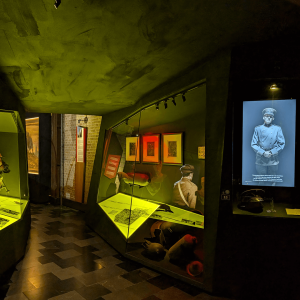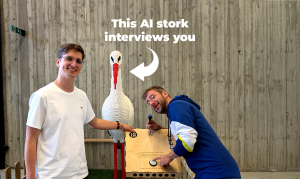Unsupervised Learning: A Comprehensive Exploration
In the ever-evolving world of artificial intelligence (AI) and machine learning, unsupervised learning has emerged as a powerful and versatile tool. This article takes a deep dive into unsupervised learning, exploring its key concepts, real-life examples, types, and differences from supervised learning.
The Essence of Unsupervised Learning: A Primer
UL is a branch of machine learning where the algorithms are trained on unlabelled data, i.e., data without predetermined outcomes. In contrast to supervised learning, unsupervised learning algorithms identify patterns, groupings, or relationships within the input data, without guidance or correction from a human expert. The goal of UL is to learn the underlying structure of the data and extract valuable insights.
Labeled training data is a collection of input-output pairs, where the input is typically a feature vector (a representation of the data) and the output is the corresponding label or target value. The machine learning model learns to make predictions based on this labeled data. Here’s a simple example using a dataset for supervised learning in the context of a binary classification problem:
Imagine we want to train a machine learning model to predict whether an email is spam or not spam. Our labeled training data might look like this:
| Email ID | Subject | Email Body | Label |
|---|---|---|---|
| 1 | Congratulations! You’ve won a gift voucher | Claim your $100 gift voucher now! | Spam |
| 2 | Meeting Reminder – Project Update | Don’t forget our project update meeting | Not Spam |
| 3 | Your PayPal Account has been limited | Please verify your account information | Spam |
| 4 | Lunch Tomorrow? | How about lunch tomorrow at the sushi bar? | Not Spam |
In this example, the input features could be the “Subject” and “Email Body” columns, and the output labels are in the “Label” column. The model would be trained on this labeled data to learn the patterns and features that distinguish spam from non-spam emails.
For most machine learning algorithms, the input features need to be converted into numerical representations, such as word embeddings or frequency counts, before being used for training.

Real-Life Examples of Unsupervised Learning
UL techniques are deployed in numerous applications across various industries. Here are a few real-life examples that demonstrate its versatility:
A. Anomaly Detection in Finance
Banks and financial institutions use unsupervised learning algorithms to detect unusual patterns in financial transactions. By identifying anomalies, these institutions can detect potential fraud, money laundering, or other illegal activities, thereby enhancing security and minimizing risks.
B. Recommender Systems
C. Natural Language Processing
Unsupervised learning has found applications in natural language processing tasks such as sentiment analysis and topic modeling. By analyzing patterns in text data, unsupervised algorithms can identify themes and sentiments, aiding in content classification and summarization.
D. Bioinformatics
In the field of bioinformatics, UL algorithms have been used to identify patterns and groupings in genetic data. This has enabled researchers to discover new gene functions, predict protein structures, and improve drug discovery processes.
Let’s talk!
If our project resonates with you and you see potential for a collaboration, we would 💙 to hear from you.
Supervised vs. Unsupervised Learning: A Comparative Analysis
To better understand unsupervised learning, it’s essential to compare it to its counterpart: supervised learning. The key differences between the two approaches are:
A. Data Labels
In supervised learning, the input data is labeled, meaning each instance has a corresponding target output. This allows the algorithm to learn from the labeled examples and make predictions based on that knowledge.UL , on the other hand, uses unlabeled data, and the algorithm must identify patterns and relationships without guidance.
B. Goals
Supervised learning aims to predict a specific output based on historical data. Its main goal is to optimize the accuracy of predictions by minimizing errors. Unsupervised learning seeks to discover the underlying structure or patterns in the data, with no predefined target output.
C. Applications
Supervised learning is commonly employed in tasks such as classification, regression, and object recognition. In contrast, UL is widely used in applications like clustering, dimensionality reduction, anomaly detection, and feature learning.
Supervised vs. Unsupervised Learning
| Aspect | Supervised Learning | Unsupervised Learning |
|---|---|---|
| Goal | Predict output labels based on input features | Discover patterns, structures or relationships in input data |
| Data | Labeled data (input-output pairs) | Unlabeled data (input data only) |
| Example Problems | Classification, Regression | Clustering, Dimensionality Reduction |
| Algorithm Examples | Linear Regression, Logistic Regression, Support Vector Machines, Neural Networks | K-means Clustering, Hierarchical Clustering, Principal Component Analysis, Autoencoders |
The Main Types of Unsupervised Learning
UL techniques can be broadly categorized into two main types: clustering and dimensionality reduction.
A. Clustering
Clustering algorithms group data instances based on their similarity, creating clusters of similar data points. These algorithms identify patterns in the data by analyzing the relationships among instances, without the need for predefined classes. Common clustering techniques include:
1. K-Means Clustering
K-means clustering is a popular and straightforward clustering technique. It aims to partition the data into K distinct, non-overlapping clusters based on the mean distance from the cluster center. The algorithm iteratively assigns data points to clusters and updates the cluster centers until convergence is reached.
2. Hierarchical Clustering
Hierarchical clustering creates a tree-like structure to represent the nested groupings of data points. This method can be either agglomerative (bottom-up) or divisive (top-down). Agglomerative clustering starts with each data point as a separate cluster and successively merges the closest clusters. Divisive clustering, on the other hand, starts with a single cluster containing all data points and recursively divides it into smaller clusters.
3. DBSCAN (Density-Based Spatial Clustering of Applications with Noise)
DBSCAN is a density-based clustering algorithm that groups data points based on their density. It identifies clusters as dense regions separated by areas of lower point density. Unlike K-means, DBSCAN does not require specifying the number of clusters beforehand and can handle noise and outliers effectively.
Example of the 3 types of clustering
Let’s consider a dataset of 2D points representing the location of customers in a city. We want to analyze this data to identify clusters or regions with high customer density, which could be useful for targeted marketing or planning new store locations.
Here’s a small example dataset:
| Aspect | Supervised Learning | Unsupervised Learning |
|---|---|---|
| Goal | Predict output labels based on input features | Discover patterns, structures or relationships in input data |
| Data | Labeled data (input-output pairs) | Unlabeled data (input data only) |
| Example Problems | Classification, Regression | Clustering, Dimensionality Reduction |
| Algorithm Examples | Linear Regression, Logistic Regression, Support Vector Machines, Neural Networks | K-means Clustering, Hierarchical Clustering, Principal Component Analysis, Autoencoders |
For this example, we will assume there are two clusters in the data.
K-means Clustering: K-means clustering initializes by randomly selecting K (in this case, 2) centroids. The algorithm iteratively assigns each point to the nearest centroid and updates the centroids based on the average of the assigned points. This process continues until the centroids no longer change significantly or a maximum number of iterations is reached. K-means would likely form two clusters by separating the points into two distinct groups based on their Euclidean distance from the centroids.
Hierarchical Clustering: Hierarchical clustering starts by treating each data point as a separate cluster. The algorithm iteratively merges the closest pair of clusters, based on a distance metric (e.g., Euclidean distance) and a linkage method (e.g., single, complete, average, or Ward’s linkage). This process continues until all points belong to a single cluster. A dendrogram is often used to visualize the clustering hierarchy. By cutting the dendrogram at a specific height, we can obtain the desired number of clusters (2 in this case). The resulting clusters would be similar to those from K-means, but the hierarchical clustering would also provide insight into the structure of the data at different levels of granularity.
DBSCAN (Density-Based Spatial Clustering of Applications with Noise): DBSCAN groups points based on their density, identifying clusters as regions with a high density of points separated by areas of lower point density. It takes two parameters: a distance epsilon (eps) and the minimum number of points required to form a dense region (minPts). The algorithm starts with a random point, expands the cluster if enough neighbors are found within the eps distance, and continues this process for all points in the cluster. Then, it moves to another unvisited point and repeats the process. Points not belonging to any cluster are treated as noise. In our example, DBSCAN would likely form two clusters similar to K-means and hierarchical clustering, but it would also have the ability to identify noise points that don’t belong to any cluster.
While all three methods might produce similar clusters for this simple example, they would handle more complex or noisy data differently. K-means is sensitive to the initial centroid placement and the number of clusters (K), hierarchical clustering can reveal multi-level structures, and DBSCAN can identify noise and is more robust to clusters with varying shapes and densities.
B. Dimensionality Reduction
Dimensionality reduction techniques transform high-dimensional data into a lower-dimensional representation while preserving the most important features or relationships. This helps improve computational efficiency and reduce the impact of the “curse of dimensionality.” Key dimensionality reduction methods include:
1. Principal Component Analysis (PCA)
PCA is a widely used linear dimensionality reduction technique. It identifies the directions in the data space along which the variance is maximized, known as principal components. By projecting the data onto the first few principal components, PCA reduces dimensionality while preserving the maximum amount of variance.
2. t-Distributed Stochastic Neighbor Embedding (t-SNE)
t-SNE is a non-linear dimensionality reduction technique that aims to preserve local structures in the data. It is particularly effective for visualizing high-dimensional data in a 2D or 3D space. t-SNE measures pairwise similarities between data points and minimizes the divergence between these similarities in the lower-dimensional representation.
3. Autoencoders
Autoencoders are a type of neural network used for unsupervised learning tasks, particularly for dimensionality reduction and feature learning. They consist of two main components: an encoder, which compresses the input data into a lower-dimensional representation, and a decoder, which reconstructs the original data from the compressed representation. By learning to minimize the reconstruction error, autoencoders capture the most important features of the data.
Example of the 3 types of dimensionality reduction
Let’s consider a high-dimensional dataset of customer preferences for a retail store. Each data point represents a customer, and each dimension corresponds to the preference score for a specific product category. Our goal is to visualize the dataset in 2D to identify patterns and potential customer segments.
Here’s a small example dataset:
Customer ID | Electronics | Clothing | Home Appliances | Sports Equipment | Books | Cosmetics |
|---|---|---|---|---|---|---|
| 1 | 3.2 | 9.1 | 1.5 | 0.8 | 7.6 | 8.7 |
| 2 | 8.4 | 1.7 | 8.9 | 6.3 | 2.1 | 1.9 |
| 3 | 3.5 | 8.6 | 1.7 | 1.0 | 7.4 | 9.1 |
| 4 | 8.1 | 2.2 | 9.2 | 5.6 | 1.8 | 1.5 |
| 5 | 2.9 | 9.3 | 2.1 | 1.3 | 8.0 | 8.4 |
PCA (Principal Component Analysis): PCA is a linear dimensionality reduction technique that identifies the directions (principal components) with the highest variance in the data. By projecting the data onto the first two principal components, we can create a 2D visualization that preserves as much of the original variance as possible. PCA works well when the data has a linear structure and the primary components of variation are orthogonal to each other.
t-SNE (t-Distributed Stochastic Neighbor Embedding): t-SNE is a non-linear dimensionality reduction technique that aims to preserve the local structure of the data by minimizing the divergence between the pairwise probability distributions of the original high-dimensional data points and their low-dimensional counterparts. It’s particularly useful for visualizing high-dimensional data in 2D or 3D. t-SNE can reveal complex structures and clusters in the data that PCA might not capture due to its non-linear nature.
Autoencoders: Autoencoders are a type of neural network that can learn a low-dimensional representation of the input data through an encoder-decoder architecture. The encoder learns to compress the input data into a lower-dimensional representation, and the decoder learns to reconstruct the original data from the compressed representation. After training, the encoder can be used to generate the low-dimensional representation for visualization. Autoencoders can capture both linear and non-linear structures in the data, depending on the architecture and activation functions used.
In our example, all three methods would produce a 2D visualization of the customer preference data:
- PCA would provide a linear projection of the data onto the first two principal components, potentially revealing major trends or axes of variation among the customers.
- t-SNE would focus on preserving the local structure of the data, potentially revealing more detailed customer segments and non-linear relationships among the preferences.
- Autoencoders would learn a non-linear mapping of the data into a 2D latent space, potentially capturing complex patterns and structures in the customer preferences depending on the architecture and training.
Each method has its strengths and weaknesses, and the choice of dimensionality reduction technique depends on the characteristics of the data and the goals of the analysis.
Let’s talk!
If our project resonates with you and you see potential for a collaboration, we would 💙 to hear from you.
Conclusion
UL is a powerful and versatile approach in the realm of machine learning, capable of unveiling hidden patterns and structures in data without the need for labeled examples. Its real-life applications span various domains, such as finance, retail, natural language processing, and bioinformatics. By understanding the differences between supervised and unsupervised learning, as well as the main types of unsupervised learning techniques, one can harness the full potential of this remarkable field.
Keep reading
Deep Neural Networks: How They Learn, Predict, and Generalize
How does a deep neural network work and what are…
Read MoreHow to create Mortal Kombat with AI characters video
The process detailing on how to make a Mortal Kombat…
Read MoreAI Interviews: fast and simple reports in no time
AI interviews: Fast & Simple reports in no time Ask…
Read MoreThe Future of Virtual Assistants: Combining NLP and Machine Learning for Better Conversational AI
Explore the importance of NLP for chatbots and virtual assistants,…
Read More




